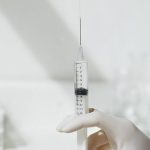
If you have high blood pressure, getting a flu shot could save your life, researchers say. A new study found that patients with high blood pressure who got a flu shot had a nearly 18% lower risk of dying during flu season. Previous research has found that the stress flu puts on the body may trigger heart attacks and strokes. Patients with high blood pressure already are at increased risk for both. For the study, researchers analyzed data from Denmark on more than 608,000 people, aged 18 to 100, with high blood pressure during nine flu seasons, from 2007 to 2016. The investigators looked at how many patients got a flu shot before each flu season and how many died. After adjusting for patient characteristics — such as age, health problems and medications — in a given flu season, flu vaccination was associated with an 18% lower risk of death from any cause; a 16% lower risk of death from any cardiovascular cause; and a 10% lower risk of death from heart attack or stroke. The findings were to be presented Sunday at the annual meeting of the European Society of Cardiology (ESC), in Paris. Research presented at meetings is typically considered preliminary until published in a peer-reviewed journal. “Given these results, it is my belief that all patients with high blood pressure should have… read on >


































